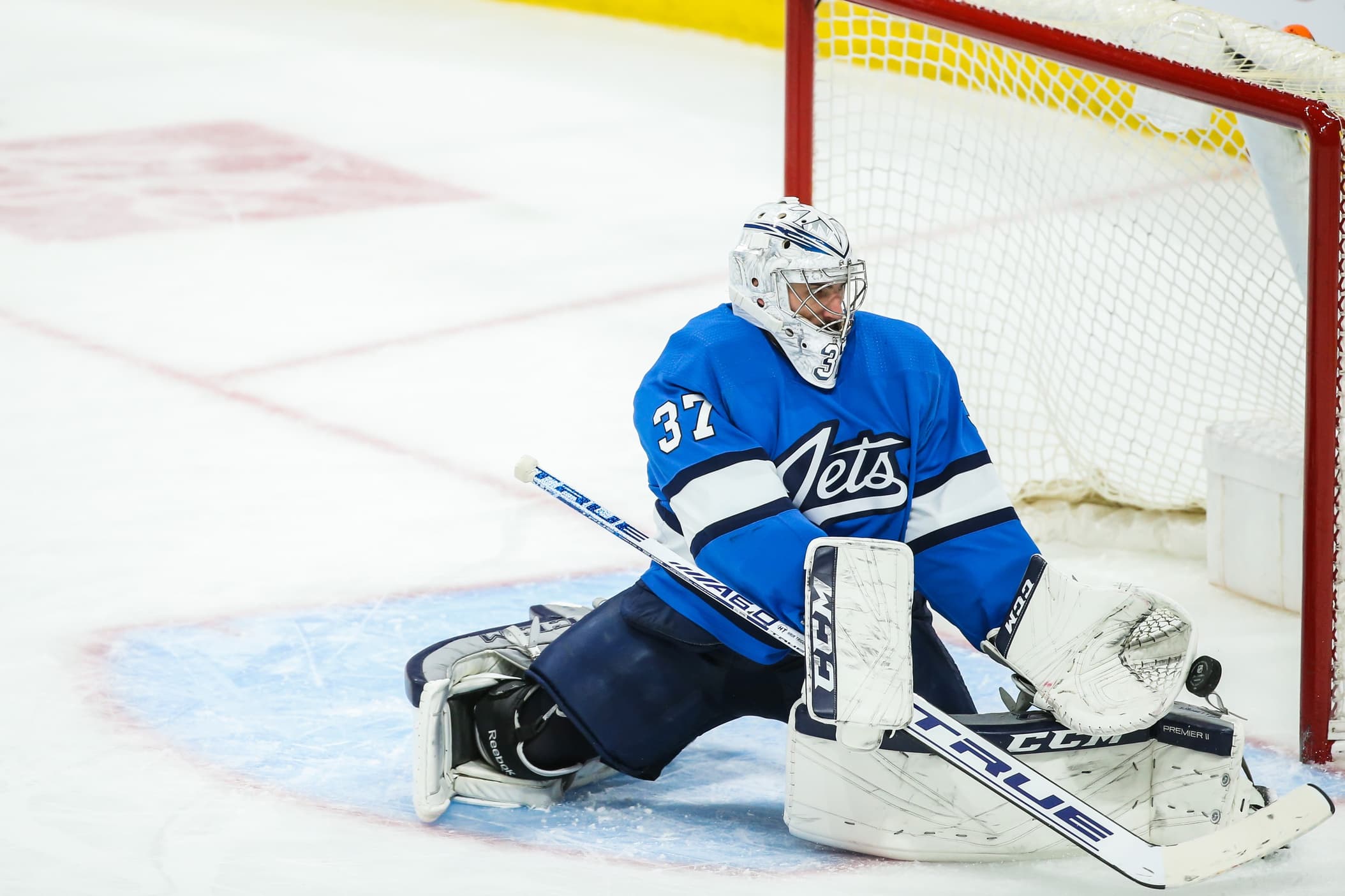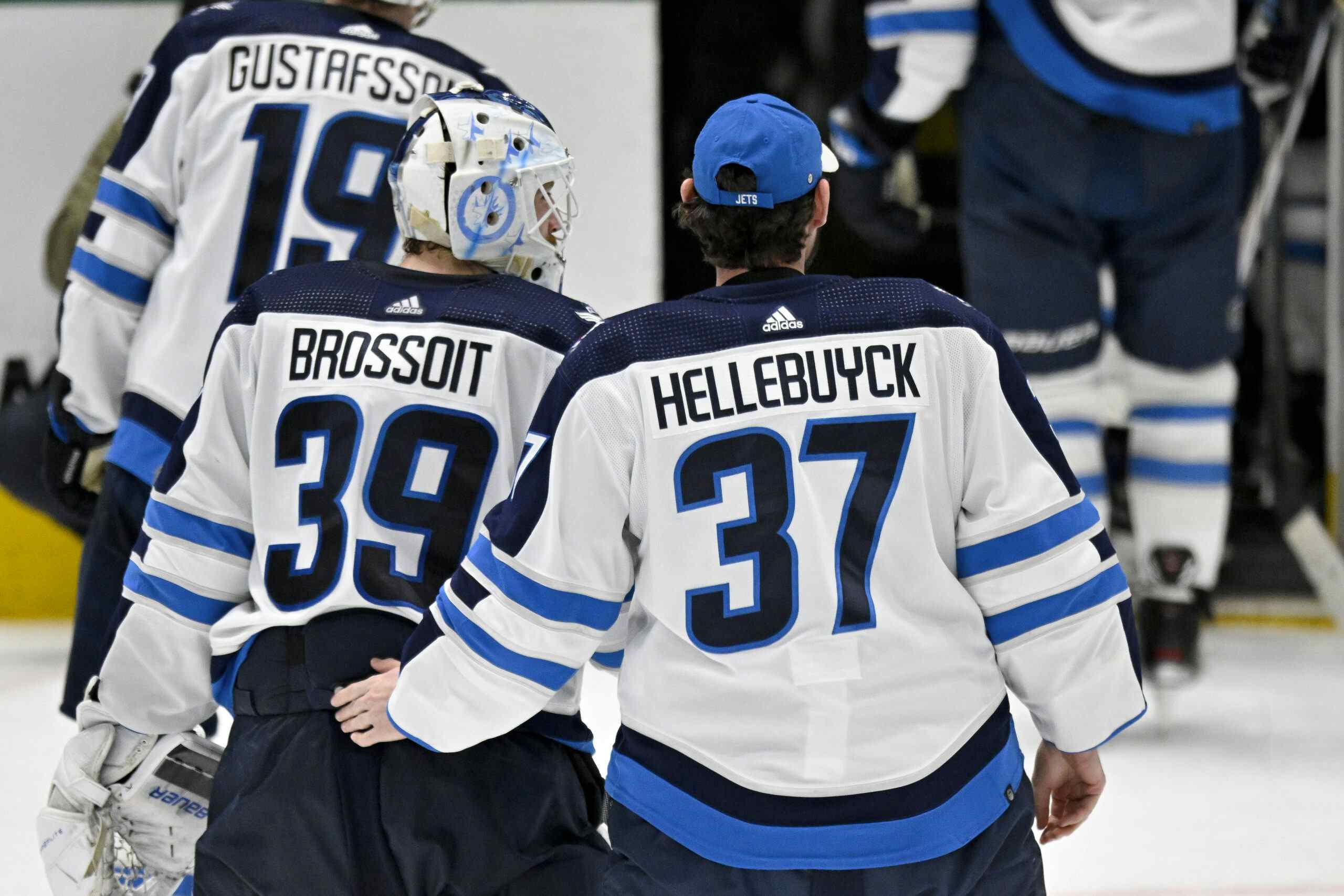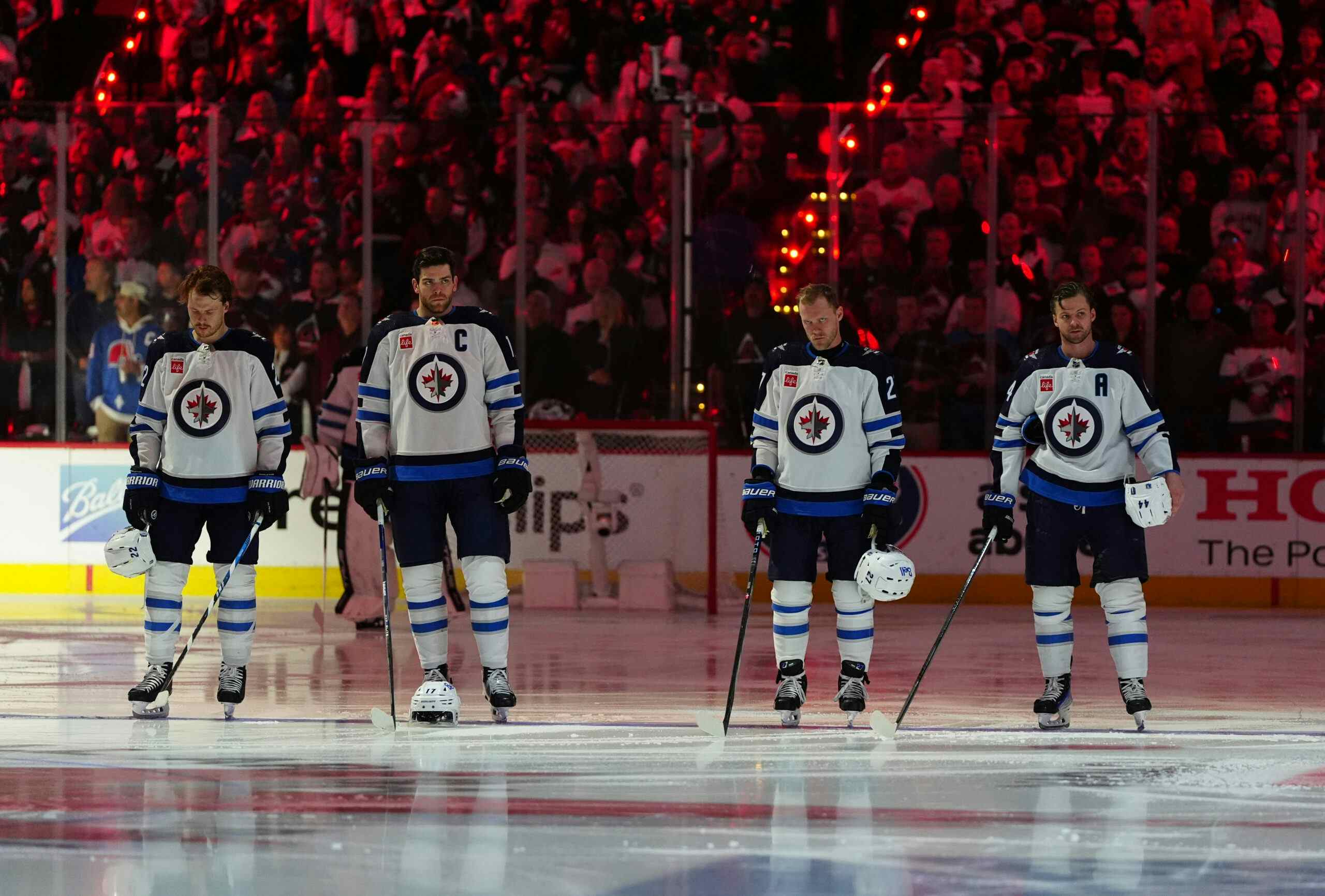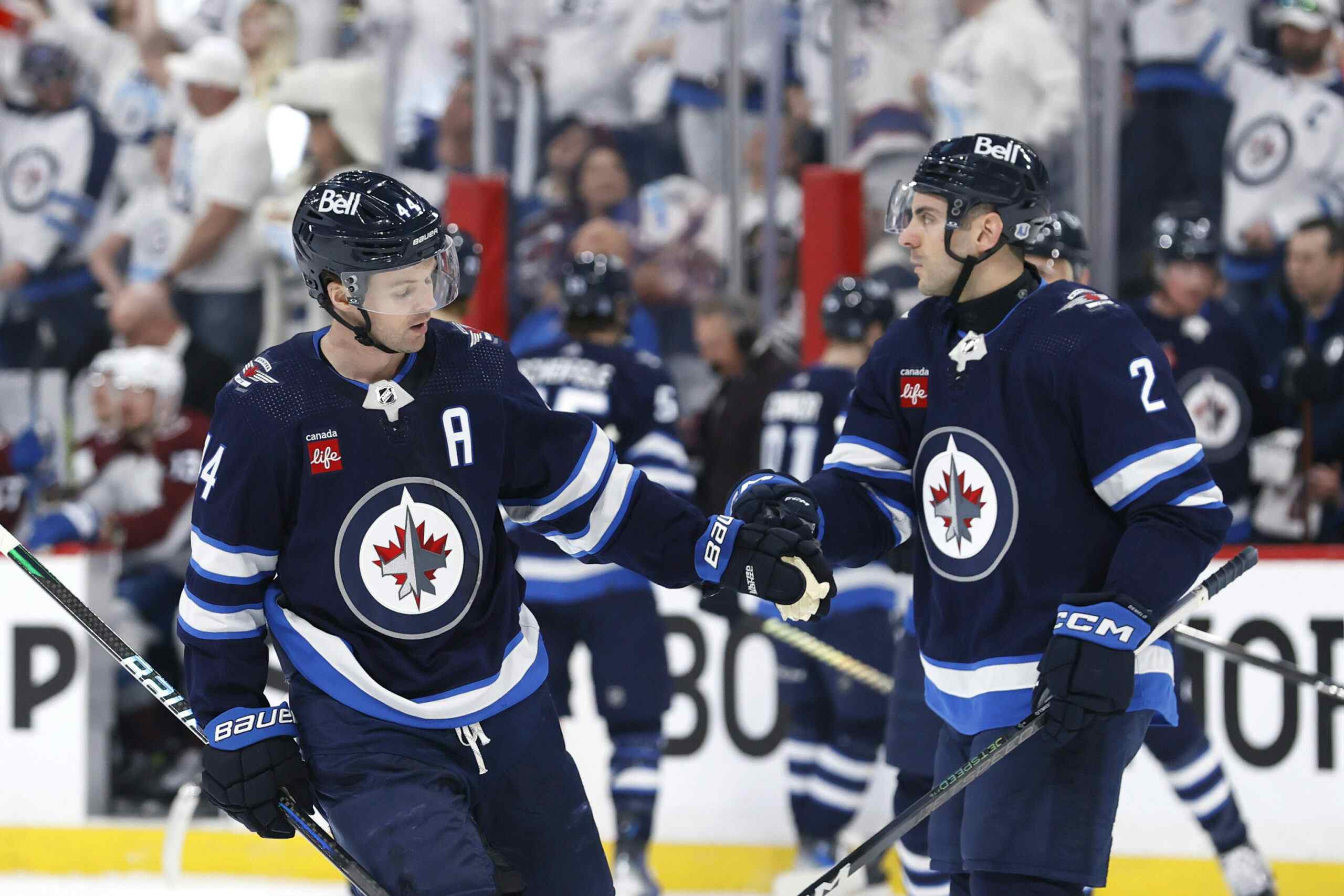Inside The Numbers: Is Goaltending The Issue On The Jets Penalty Kill?

By Alec Beatty
4 years agoOne of the @Winnipeg Jets biggest issues so far in the 2019-20 season has been the Jets Penalty Kill. Lots of theories have been floated about why the Jets penalty kill is currently tied for 29th in the NHL at 73.3%. In this piece, I will dive into the numbers behind the Jets penalty kill to try and understand why the PK is struggling so much, and what could be done to fix it in the second half of the season.
Stats in this piece are courtesy of Corsicahockey.com and nhl.com, and are as of December 26, 2019.
Summary Stats
The table below shows a comparison of the overall PK stats for the last 3 seasons:
| Season | 2017-18 | 2018-19 | 2019-20 |
| PP GA | 50 | 52 | 24 |
| Times Shorthanded | 274 | 250 | 90 |
| PK% | 81.8% | 79.2% | 73.3% |
| League Avg PK% | 79.8% | 80.2% | 80.3% |
| Difference | +2.0% | -1.0% | -7.0% |
The Jets penalty kill has been on a steady decline since the 2017-18 season. So far this season, the team has killed only 66 of the 90 shorthanded situations they have faced. Surprisingly, their PK has been better on the road then it has at home. On the road, the Jets have killed 35 out of 44 shorthanded situations (79.5% – 14th in NHL), while at home they have killed on 31 out of 46 shorthanded situations (67.4% – Last in NHL), which is 4.6% worse than the 30th ranked @Los Angeles Kings. Overall, the Jets PK is operating 7.0% lower than the league average of 80.3%.
The Jets have been a very disciplined team so far this season. Their 90 times shorthanded are best in the league, and the 2.43 times shorthanded per game is the 4th best mark since the 2004-05 lockout, bested only by the 2014-15 @Calgary Flames, the 2014-15 @Carolina Hurricanes, and the 2017-18 Carolina Hurricanes. Even though they have been well disciplined, the Jets currently have the 5th worst penalty kill since the lockout, and none of the other 10 worst PKs since the lockout have made the playoffs.
The Jets have given up powerplay goals against in just under 50% of their games (18 out of 37 games). When the Jets do not give up a powerplay goal against, they have a record of 15-3-1 for a points percentage of .816. When they give up at least 1 powerplay goal, they have a record of 6-11-1 for a points percentage of .361.
Face-Offs and the Penalty Kill
One of the major thoughts that I have had several times when watching the Jets PK has been “Well, they’ve lost the face-off, so they’re going to get scored on now.” Obviously, this is an exaggeration, but the numbers indicate a strong correlation between the team’s PK faceoff percentage and their PK success.

In 2017-18 and 2018-19, the Jets had a penalty kill FO% of 46.8% each season, which was at or above league average in each season. This season, their penalty kill FO% of 43.5% is well below the league average of 44.8%. The biggest driver of this drop off is @Adam Lowry. Lowry won 52.0% of his 244 shorthanded faceoffs in 2018-19, ranking 21st out of 90 skaters that took at least 82 shorthanded faceoffs last season. This year, Lowry has won just 45.2% of his 84 shorthanded faceoffs, putting him 38th out of 68 skaters that have taken at least 40 shorthanded faceoffs this season.
The number of PP goals the Jets give up in a game can be correlated to their PK faceoff percentage. In the games where the Jets do not give up a PPG, they have a PK FO% of 44.3%, well above their overall percentage. In games where they give up 1 PPG, the PK FO% drops to 35.1%, while in games where they give up 2 PPGs, their PK FO% is 38.9%. In this analysis, I am classifying the one game this season where they have given up 3 PPG as an outlier, as more than one occurrence is needed to evaluate whether there is a correlation or not.
In summary, there is a fairly strong correlation that as the PK FO% drops, the number of PPG that the Jets allow increases. But is the face-off the only driver of the Jets issues?
Goaltending and the Penalty Kill
It is often said that your best penalty killer needs to be your goaltender, especially when your defense corps has gone through as much upheaval as the Jets have gone through. To isolate the impact the goaltenders have had on the Jets penalty kill, we look at the Expected Goals allowed per 60 minutes metric, as well as the goaltender’s expected save percentages and expected Goals against on the PK. Expected goals is a metric that takes into account multiple factors, including shot location, to quantify how dangerous the chances that are given up are, and helps evaluate the performance of a team and its goaltenders against expectation.
| Season | 2017-18 | 2018-19 | 2019-20 |
| PK xGA per 60 | 8.48 | 7.48 | 7.39 |
| PK GA per 60 | 6.29 | 7.46 | 10.05 |
| Difference | +2.19 | +0.02 | -2.66 |
With as much turnover as the Jets penalty kill has suffered (losing @Brandon Tanev, @Ben Chiarot, @Dustin Byfuglien, @Tyler Myers, and @Jacob Trouba), the expectation was that the team would concede more high-danger offense, and that in turn the Jets would give up more goals. Based on the expected goals table above, only the second part of that assumption has come to fruition. The Jets are giving up fewer expected goals per 60 minutes of shorthanded play than they have in either of the last two seasons, but they are giving up almost 3 goals more per 60 minutes of shorthanded time than expected. Their -2.66 difference between expected and actual goals against per 60 minutes in worst in the league.
Next, I evaluated the performance of each of the 2 goaltenders, @Connor Hellebuyck over the last 3 seasons and @Laurent Brossoit over the last 2 seasons.

| Connor Hellebuyck | 2017-18 | 2018-19 | 2019-20 |
| PK SV% | 90.26% | 87.38% | 85.29% |
| xPK SV% | 86.67% | 86.59% | 86.92% |
| Difference | 3.59% | 0.79% | -1.63% |
| Shots Against | 380 | 309 | 102 |
| PK GA | 37 | 39 | 15 |
| xPK GA = (1-xPK SV%) x Shots Against | 51 | 41 | 13 |
| Difference | +14 | +2 | -2 |
As the stats above show, Hellebuyck’s performance in 2017-18 was a key driver to the success of the Jets penalty kill. If Hellebuyck had performed at expectation that year, the Jets penalty kill would have been 3% worse than the league average, or 76.6%. As with the rest of his game last season, Hellebuyck took a step back in 2018-19, however, he still performed slightly above expectation when his team was shorthanded. This season, he has struggled when his team has been shorthanded, with a save percentage currently 1.63% worse than expected. When applying that to the number of shots he has faced, he has conceded approximately 2 goals more than expected this season.
| Laurent Brossoit | 2018-19 | 2019-20 |
| PK SV% | 88.12% | 80.00% |
| xPK SV% | 85.24% | 87.90% |
| Difference | 2.88% | -7.90% |
| Shots Against | 101 | 40 |
| PK GA | 12 | 8 |
| xPK GA = (1-xPK SV%) x Shots Against | 15 | 5 |
| Difference | +3 | -3 |
Last year, Laurent Brossoit had an excellent season across the board, and this success was reflected in his shorthanded performance. This year, his shorthanded statistics are back at the same level as his 2017-18 statistics with Edmonton. That year, his PK SV% was 77.36%, which was 5.68% lower than expected, while his team gave up 8.11 GA/60 while shorthanded. This year, his save percentage is almost 8% lower than expected, corresponding to 3 more goals given up than expected so far this season.
The rule of thumb in previous seasons has been that 3 goals per game equals 1 win in the standings. This means that the Jets goaltenders have left almost 2 wins on the table so far this season just from their shorthanded play. In a division race that is expected to be tight to the finish, this facet of the game from their goaltenders will need to improve in the second half of the season to ensure that they hold on to the playoff spot they currently occupy.
What do you think is the biggest factor causing the Jets PK to struggle? Do any of these stats surprise you? What would you do to fix the Jets PK? Let me know in the comments section!
Recent articles from Alec Beatty





